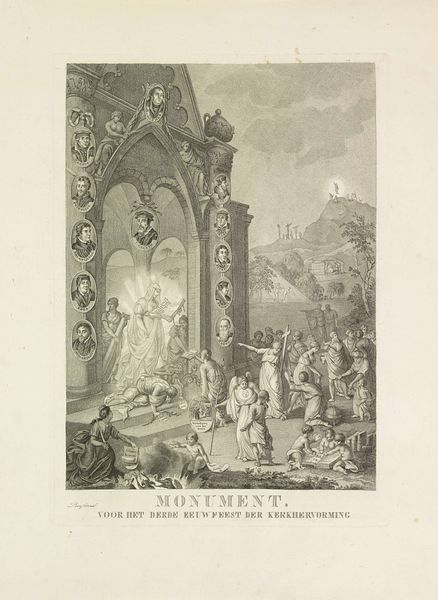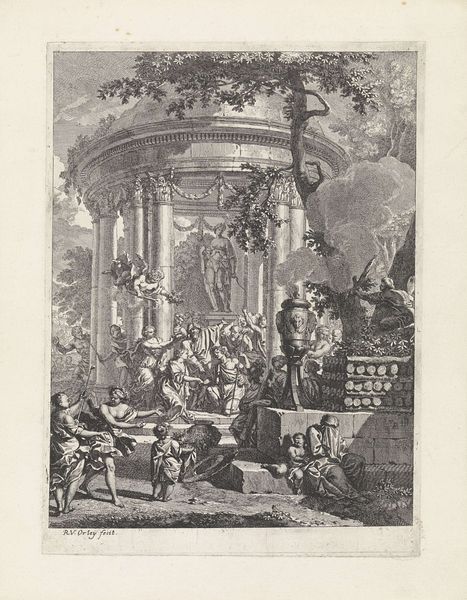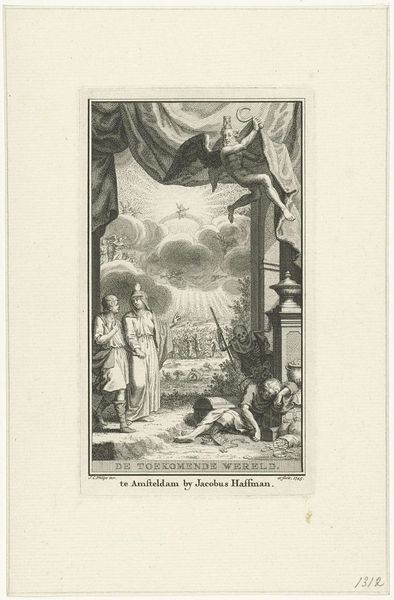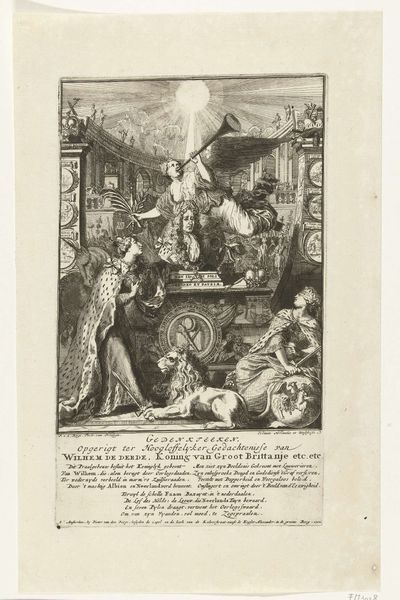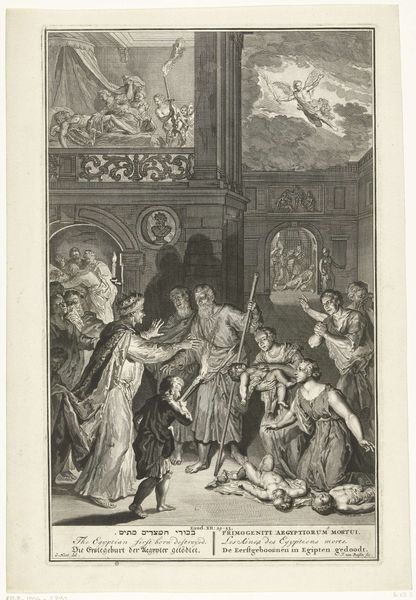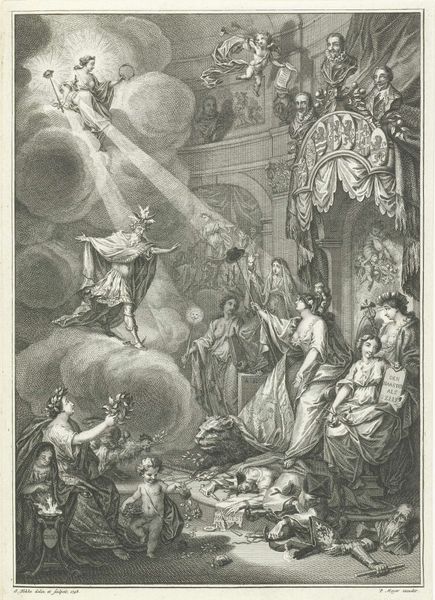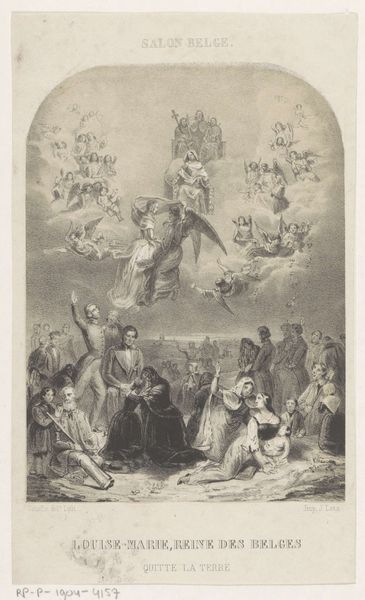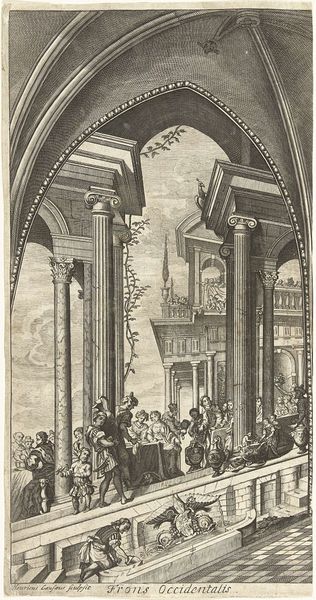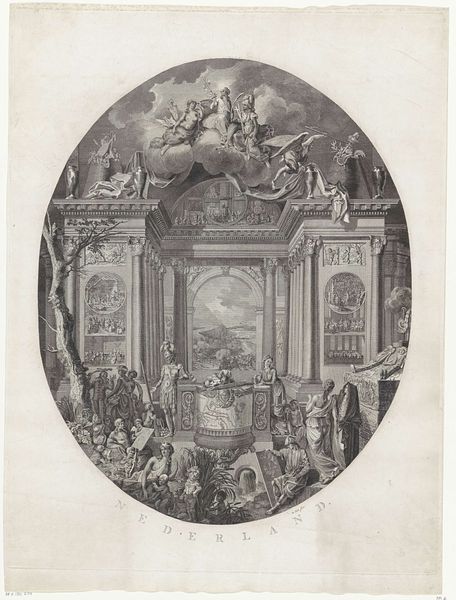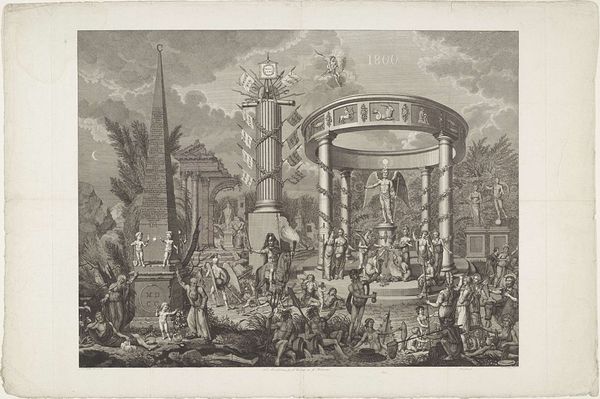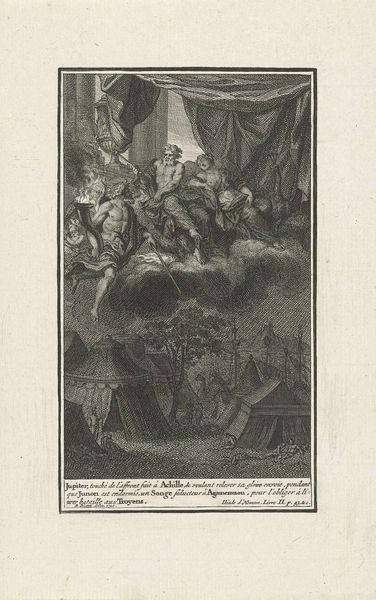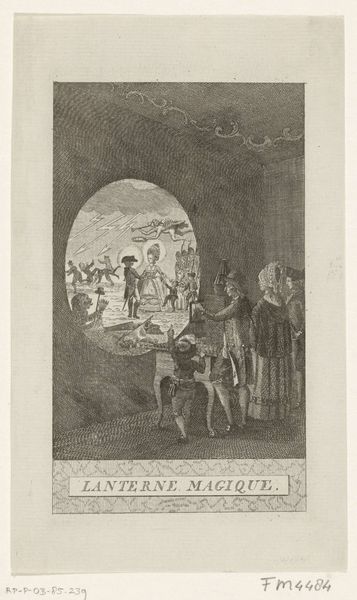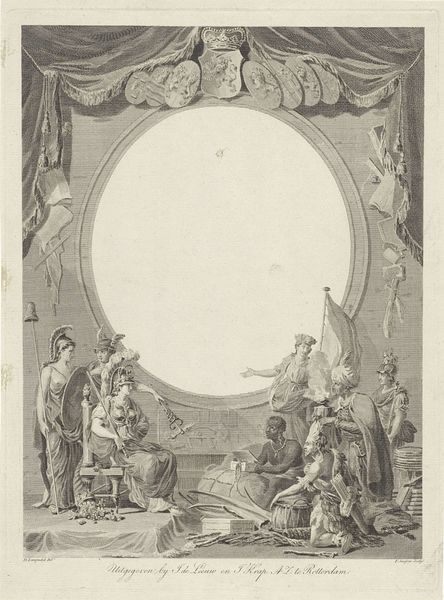
print, engraving
#
neoclacissism
#
allegory
# print
#
landscape
#
history-painting
#
engraving
Dimensions: height 285 mm, width 277 mm
Copyright: Rijks Museum: Open Domain
Curator: Hello, welcome. Editor: Thanks! We’re looking at "Allegorische voorstelling van een monument voor de gereformeerden", an engraving dating somewhere between 1771 and 1807 by Willem Kok. It's packed with figures and symbols, giving it an almost dreamlike quality. What do you see in this piece? Curator: Well, immediately I’m drawn to the layers of historical and social commentary embedded in this image. It presents the Protestant Reformation, not just as a religious event, but as a radical reshaping of society. Notice how the central figure, likely representing reformed worship, is positioned within a grand architectural structure reminiscent of a temple. Editor: Yes, like a Neoclassical temple, framing this idealized scene. Curator: Exactly, and consider what's being discarded at the bottom: symbols of worldly power and wealth. This print promotes reformed religion while overtly criticizing the status quo and advocating for social change. Think about the audience at the time—how would they interpret these visual cues? What did it mean to associate reformed ideals with Neoclassical grandeur, and social upheaval? Editor: So it’s not just a religious statement but a political one, tied to the changing social structures of the time? Curator: Precisely. And look at how it engages with Enlightenment ideals, positioning reformed worship as a path towards progress. It almost creates a before and after: those shackled and sorrowful giving way to knowledge and liberty. Editor: That's a really interesting point; I hadn’t considered how loaded each symbol is! Curator: Right, and that's the key: questioning the underlying narrative and exploring who is empowered, who is silenced, and what broader shifts are at play in that historical moment. Editor: It makes me think differently about art’s role in shaping and reflecting society’s values. Curator: Indeed, and by looking closely, we reveal some complex intersections between religious, political, and philosophical ideologies.
Comments
No comments
Be the first to comment and join the conversation on the ultimate creative platform.
